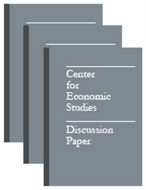“Class of Customer” Question from the US Economic Census
“Class of Customer” Question from the US Economic Census
Abstract
The Economic Census (EC) collects detailed information on the class of customers served by establishments—for example, the share of an establishment’s sales to other businesses or to government entities—for a subset of sectors in the economy. In this paper, we evaluate the data from the “Class of Customer” question from the EC, with a particular focus on sales to the government. These data have seldom been used in empirical research and are unique in that they enable researchers to link establishment-level Census data with information on government procurement.
We compile and analyze large volumes of publicly available tabulated data about the class of customer question over time. Using these data, we document three main findings. First, total sales to government from establishments covered by the class of customer question account for approximately 4 percent of GDP—just under half of total government procurement as measured in the national accounts. Second, the sectoral distribution of government expenditure is significantly different from that of private sector spending. Certain industries, such as Construction and Professional, Scientific, and Technical Services, account for a much larger share of government expenditure relative to private sector expenditure. Third, sales to the government make up a substantial portion of total sales in several sectors—for instance, 70 percent in Facilities Support Services, 30 percent in Waste Treatment and Disposal, and 17 percent in Construction. Finally, we use the microdata to examine nonresponse rates to the class of customer question across establishments based on the number of employees.
Others in Series
Working Paper
Working Paper
Working Paper




